“A hypoplastic relation for granular materials with a predefined limit state surface” paper by P. A. Von Wolffersdorff April 1996 include a triaxial test result of sample 10cm diameter and length. The Hochstetten sand properties are assigned screenshot is attached below and Meshing of the sample by standard linear C3D8 brick element. Two steps of static general are created. step 1 confining pressure of 200 kPa and step 2, shearing stage applied displacement of 1cm by creating 10 second time step (1mm/sec loading rate). After the analysis completed the stress S33 in Z direction after shearing not generated. stresses are same as during confining stage in S11, S22 and S33 even after 1cm displacement of the soil sample.
Difficulties in calibration of triaxial test on Hochstetten sand by sand Hypoplasticity model
Related Articles
-
Htypoplastic Model in Miidas GTS NX
 Kassem Dib||Constitutive Modelling|6 |Views 2,297
Kassem Dib||Constitutive Modelling|6 |Views 2,297
Hello.. I am defining the hypoplastic parameters for Karlsruhe sand (found in a paper) using MIDAS GTS NX. In the software the a requesting (in addition of parameters) the number […] -
Shear modulus degragation
 Baban Bapir||Constitutive Modelling|1 |Views 4,608
Baban Bapir||Constitutive Modelling|1 |Views 4,608
Hello all, I am using the clay hypoplsticity model in Abaqus. As shown in the picture, I have to construct the stiffness desegregation curve to calibrate the R value. Can […] -
Hypoplastcity sand model
 Pooja Patil||Constitutive Modelling|11 |Views 4,418
Pooja Patil||Constitutive Modelling|11 |Views 4,418
Not able to run the subroutine ……..error is coming ……UMAT: illegal (negative) actual void ratio detected Can anybody help -
UMAT for strain-rate effects
 Luis Zambrano-Cruzatty||Constitutive Modelling|0 |Views 3,950
Luis Zambrano-Cruzatty||Constitutive Modelling|0 |Views 3,950
Dear community, I’m interested in constitutive models that can handle strain-rate effects for HSR on sands for simulating free fall penetration. I would appreciate any help. Do you know any […] -
Question on the Matlab driver-hypoplastic models
 c sx||Constitutive Modelling|0 |Views 4,079
c sx||Constitutive Modelling|0 |Views 4,079
Dear all, After carefully reading the matlab drivers of hypoplastic models, I was wondering whether the driver can simulate triaxial extension tests. As I change the constraints to reflect triaxial […] -
Modelling TX monotonic compressive test with ABAQUS and SANISAND – not working
 Riccardo Zabatta||Constitutive Modelling|9 |Views 4,484
Riccardo Zabatta||Constitutive Modelling|9 |Views 4,484
I am trying to reproduce a TX monotonic, compressive test on a sand by using a 1-element, axisymmetric ABAQUS FE model, assigned to a SANISAND material. For this purpose, I […] -
Error: permission to access files denied (Hypoplasticity in PLAXIS)
 Katharina Fechtner||Constitutive Modelling|7 |Views 5,928
Katharina Fechtner||Constitutive Modelling|7 |Views 5,928
Hello, I am trying to implement the dll for hypoplasticity in Plaxis 3D. It runs through both the Initial Phase and a Nil Step. However, when it calculates about 20 […] -
Hardening parameters (yield stress & absolute plastic strain)
 Amir Mohammad Yarahmadi||Constitutive Modelling|4 |Views 5,615
Amir Mohammad Yarahmadi||Constitutive Modelling|4 |Views 5,615
Hi to everyone I want to model a Sand with Cap plasticity or Drucker Prager failure criterion in ABAQUS, and I have the result of Triaxial test (I’ve attached the […]
Who is Online
No one is online right now
Search SoilModels Website
Recent posts
-
 Paper of Coulomb, C. A. (1773) 15.4.2024
Paper of Coulomb, C. A. (1773) 15.4.2024
-
 ABAQUS UMAT of hypoplastic clay model 6.4.2024
ABAQUS UMAT of hypoplastic clay model 6.4.2024
-
 Prague Geotechnical Days 2024 “Geotechnical monitoring” and 30th jubilee Prague Geotechnical Lecture by prof. Eduardo Alonso 5.4.2024
Prague Geotechnical Days 2024 “Geotechnical monitoring” and 30th jubilee Prague Geotechnical Lecture by prof. Eduardo Alonso 5.4.2024
-
 UMAT for Creep-SCLAY model. 1.3.2024
UMAT for Creep-SCLAY model. 1.3.2024
-
 Cyclic tests with Triax element test driver 14.2.2024
Cyclic tests with Triax element test driver 14.2.2024
-
 SUMMER SCHOOL ‘Numerical Modelling in Geotechnical Engineering’, Innsbruck – July 22nd-26th, 2024 1.2.2024
SUMMER SCHOOL ‘Numerical Modelling in Geotechnical Engineering’, Innsbruck – July 22nd-26th, 2024 1.2.2024
-
 COURSE IN SOIL MODELING – NTNU, Trondheim – October 14th to 18th, 2024 21.12.2023
COURSE IN SOIL MODELING – NTNU, Trondheim – October 14th to 18th, 2024 21.12.2023
-
 MSE walls design in Plaxis 11.12.2023
MSE walls design in Plaxis 11.12.2023
-
 sand liquefaction modelling in Anura3D 8.12.2023
sand liquefaction modelling in Anura3D 8.12.2023
-
 BCV bentonite experimental and modelling datasets 14.11.2023
BCV bentonite experimental and modelling datasets 14.11.2023
-
 Challenges in simulating geomechanical models using Mohr-Coulomb with Tension Cut-Off in Abaqus 20.10.2023
Challenges in simulating geomechanical models using Mohr-Coulomb with Tension Cut-Off in Abaqus 20.10.2023
-
 Analys soil liquefaction with Abaqus under blast load 19.10.2023
Analys soil liquefaction with Abaqus under blast load 19.10.2023
Recent Comments
- Gertraud Medicus on ABAQUS UMAT of hypoplastic clay model
- Chen Zhiming on Download Package of Charles University Implementation of High Cycle Accumulation Model
- Konstantinos Chatzis on Cyclic tests with Triax element test driver
- Abhay Pratap Singh on Cyclic tests with Triax element test driver
- Giovanni Ciardi on Cyclic tests with Triax element test driver
- Konstantinos Chatzis on Cyclic tests with Triax element test driver
- Ismail Khan on Cyclic tests with Triax element test driver
- Kanika Lamba on Cyclic tests with Triax element test driver
- Arie Koot on How to model the settlement in soil due to water drawdown.
- Konstantinos Chatzis on Cyclic tests with Triax element test driver
- Jose Duque on Cyclic tests with Triax element test driver
- MohamadReza Kamali on How to model the settlement in soil due to water drawdown.
- Leo Alibert on MSE walls design in Plaxis
- Ignacio Zuloaga on MSE walls design in Plaxis
- Giada Orlando on Problem with VUMAT interface
- Michael Spyridis on Problem with VUMAT interface
- Ahmad Moeineddin on Problem with VUMAT interface
- Nikolay Suyo Calla on Hardening soil Model UMAT

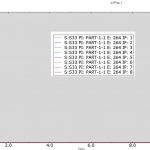
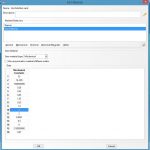
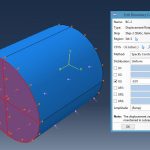
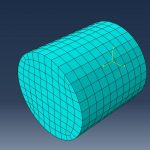
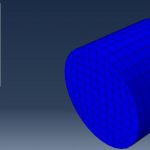
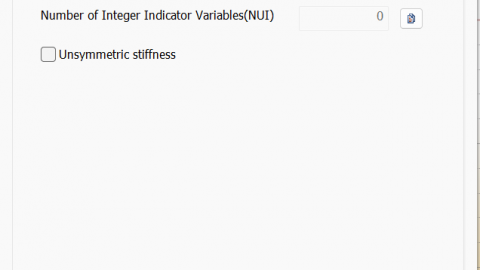
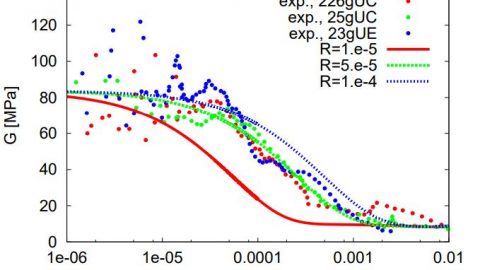


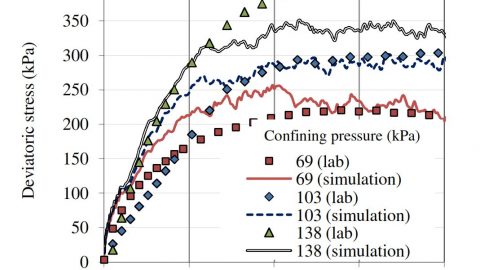

Hi Akshay, it seems to me that you assign Par15 to very high value. Par15 is bulk modulus of water to be used exclusively in undrained analysis using penalty method. As you apply undrained condition during compression stage, effective stress will not change. Can you try to set Par15=0 and rerun? Please check Statev8, which is pore water pressure, and calculate the effective stresses yourself as total stress (Abaqus output) minus pwp. Regards David
Dear Dr. David Mašín
also i am facing this problem when generate intergranular strain parameters with setting Par15=0. but no problem when turn off intergranular strain parameters.
Regards